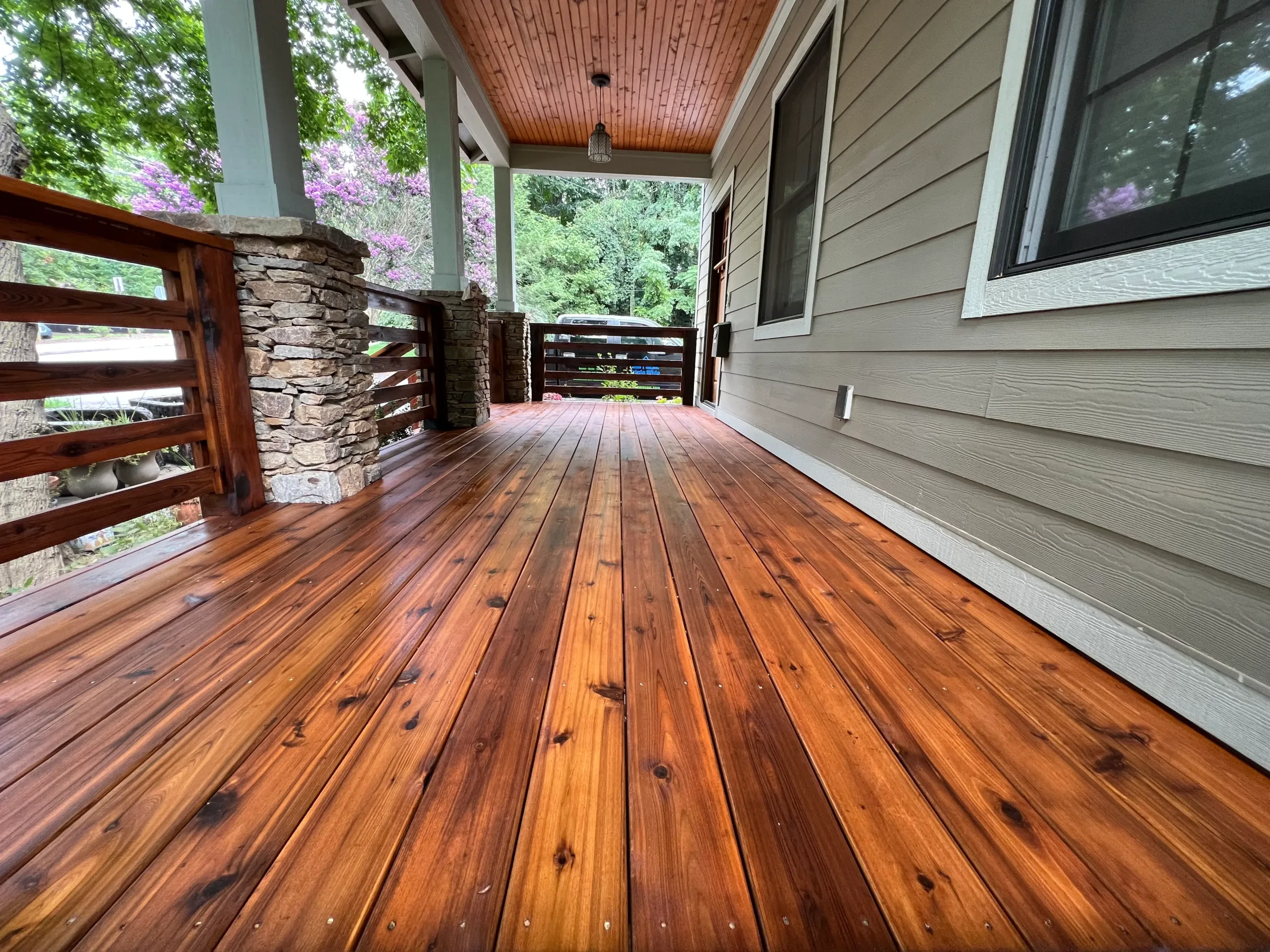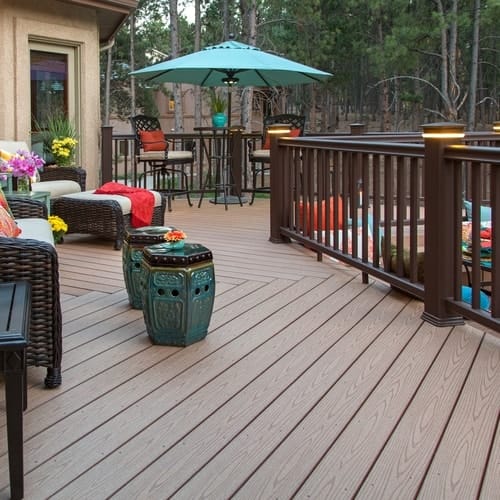Chicago Deck Staining Experts: Drawing Out the most effective in Your Deck
Chicago Deck Staining Experts: Drawing Out the most effective in Your Deck
Blog Article
A Comprehensive Guide to Different Kinds of Deck Discoloration Techniques for Ultimate Protection and Aesthetics
In the realm of deck upkeep, the art of tarnishing stands as an essential step in the direction of both protecting the stability of your exterior area and boosting its aesthetic charm. As we browse via the elaborate globe of deck staining methods, one begins to value the nuanced approaches that can make all the distinction between a mediocre coating and a perfect one. From the option of the appropriate discolor kind to the precise application approaches, each facet plays a crucial function in achieving that best equilibrium in between security and visual appeals. Join us as we discover the secrets behind achieving the supreme deck discoloration results-- a journey where every brushstroke shapes not just the surface area, yet the extremely essence of your exterior shelter.
Understanding Various Sorts Of Spots
Various types of spots are frequently made use of in the procedure of deck discoloration to attain different visual and safety results. Transparent discolorations are excellent for showcasing the natural grain of the wood while giving minimal security versus UV rays and wetness. On the other hand, semi-transparent spots offer a balance between shade enhancement and security, permitting some wood grain to show via. For a much more opaque surface that provides maximum security against the components, strong stains are the recommended option. These discolorations can be found in a vast array of shades and effectively conceal the timber grain.
Moreover, there are also specialized stains such as printer toners and sealants. Toners add a tip of color to the wood while giving minimal defense, making them suitable for newer decks with less wear. Sealers, on the other hand, offer security against wetness and UV rays without including shade, making them a preferred choice for decks that currently boast a desirable tone. Recognizing the characteristics and benefits of each type of discolor is vital for achieving the desired appearance and durability for your deck.
Selecting the Right Discoloration Shade
When considering the aesthetics of your deck staining project, the selection of stain shade plays a crucial function in improving the safety qualities of the chosen discolor type (Chicago Deck Staining). The shade you select can significantly affect the overall look of your deck, in addition to its ability to withstand the aspects with time
When choosing a stain shade, it's important to consider the existing color pattern of your home's outside. Integrating the deck discolor with the overall aesthetic of your home can produce a visually enticing and cohesive exterior room. In addition, the color of your deck discolor can affect the temperature of the deck surface; darker colors have a tendency to soak up even more heat, while lighter shades reflect sunshine and stay cooler.
In addition, the kind of wood you are staining will certainly likewise influence just how the tarnish shade appears. Different timber types can communicate with the tarnish in different means, potentially modifying the last color. It's recommended to examine the tarnish on a tiny, unnoticeable location of the deck to make sure the shade turns out as desired prior to waging the whole task.
Preparing Your Deck for Discoloration
To make sure a durable and effective deck staining project, detailed prep work of the deck surface is crucial. Begin by cleansing the deck thoroughly to get rid of dust, crud, mold, and any old complete or tarnish. Use a deck cleaner or a combination of water and cleaning agent together with a tight brush or pressure washer to scrub the surface clean. After cleansing, allow the deck to dry totally before proceeding to the following step.
Examine the deck for any kind of damaged or rotten boards that require to be changed. Hammer down any kind of extending nails and sand any kind of rough locations to make sure a smooth surface area for staining. Inspect for any loose railings or steps that may require tightening or fixing.
When the deck is clean, dry, and in excellent repair service, take into consideration using a timber brightener to bring back the deck's natural color and open up the timber pores for better discolor penetration. Lastly, shield any neighboring plants, furnishings, or surface areas with plastic sheeting prior to waging the staining procedure. Proper prep work is vital to attaining a professional-looking surface and making best use of the longevity of your deck discolor.
Applying Stain With Numerous Methods
For a perfect and specialist surface, the technique of applying discolor plays a critical function in boosting the look and sturdiness of your deck. There are several methods you can use to make certain an efficient application of discolor.
Cleaning is a traditional method that permits accuracy and control over the quantity of stain applied. It is ideal for intricate locations and you can find out more getting to in look at here between deck boards (Beautiful Deck). Rolling is a quicker choice, covering bigger area efficiently. Back-brushing after rolling is advised to also out the tarnish and work it right into the timber for better infiltration.
Splashing is another prominent method, offering rate and ease of application, particularly for big deck areas. It is necessary to use a high-grade sprayer and bear in mind overspray. Pad applicators supply a smooth and even end up and are ideal for both vertical and horizontal surface areas. Whichever strategy you select, making certain appropriate preparation and complying with producer guidelines will certainly help accomplish a durable and beautiful stain coating on your deck.

Preserving and Re-staining Your Deck
When it comes to re-staining your deck, the frequency depends on numerous variables such as the type of stain utilized, the environment in your location, and how much wear and tear your deck experiences. Generally, it is recommended to re-stain your deck every 2-4 years to maintain its security and looks.
Before re-staining, make sure the deck is tidy, dry, and free of any kind of previous tarnish residue. Sanding may be needed to ravel harsh areas or get rid of old stain that is flaking. Choose a high-quality tarnish that fits your deck's product and gives the desired degree of protection. Use the stain uniformly using the proper strategy gone over previously in this overview to make sure a stunning and durable coating Continued - Beautiful Deck. By staying aggressive with maintenance and re-staining, you can take pleasure in a well-protected and aesthetically enticing deck for many years to come.
Final Thought
In conclusion, understanding the different sorts of deck stains, picking the best color, appropriately preparing the deck, applying tarnish with various strategies, and keeping and re-staining the deck are important steps for supreme security and aesthetics. By complying with these actions, you can make certain that your deck remains in leading condition for years to come.
Additionally, the color of your deck discolor can affect the temperature level of the deck surface area; darker colors tend to take in more heat, while lighter shades show sunlight and stay cooler.
It's a good idea to examine the discolor on a little, low-profile area of the deck to make certain the color turns out as wanted prior to proceeding with the entire task.

Report this page